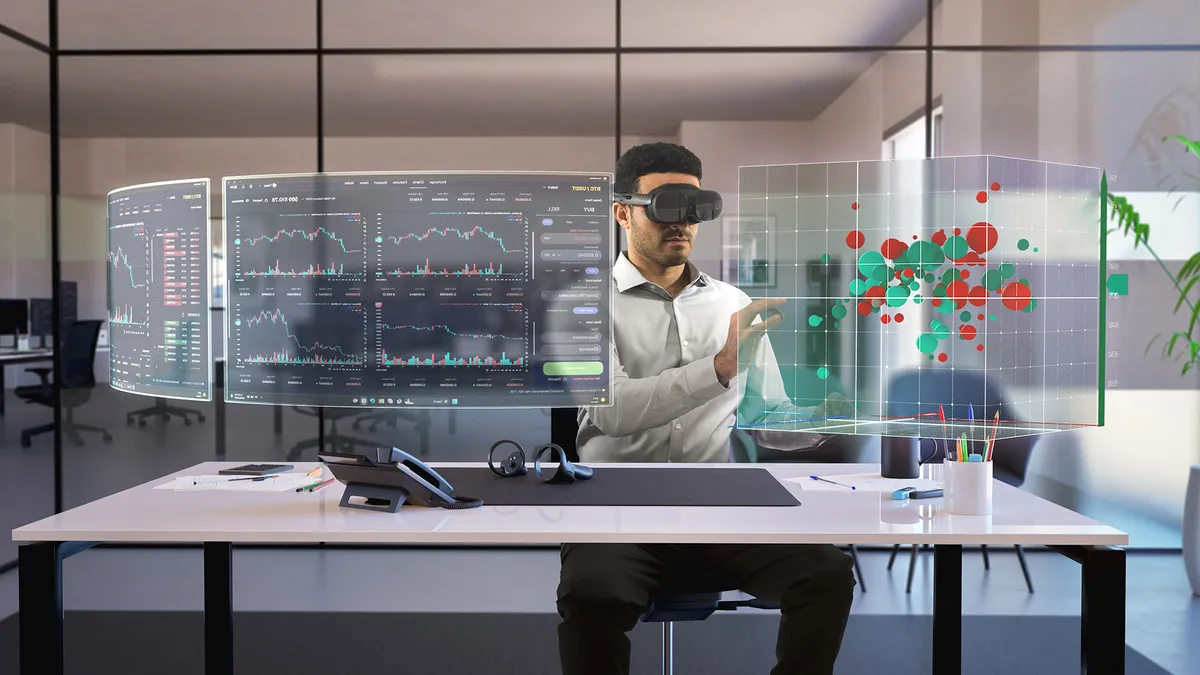In an age of rampant cyberattacks, fickle customers and a highly competitive landscape marked by large mergers and tenacious new startups, it’s no exaggeration to say that today’s big financial institutions are facing equally big challenges.
Customers are less loyal than ever before, with banks around the world seeing retention rates drop by as much as 20% due to poor customer experience. Mergers between big players have left an opening for new digital banking platforms to challenge long-time incumbents. And to top it all off, the finance sector has seen more than 20,000 cyberattacks since 2004, with $12 billion in losses according to the IMF. People are rightfully worried about scams and how their banks will protect them, with FTC data showing that US consumers lost a combined $10 billion to fraud in 2023 alone.
While there’s no single panacea to these problems, emerging technologies like Extended Reality (XR) hold the promise of a brighter future. To date, finance institutions have begun adopting XR to improve training, which in turn can bring trickle-down benefits to employees and customers alike. XR boasts a 7.5X better learning retention rate compared to textbook-based training, and a 15X better retention rate than lecture-based training, according to the National Training Laboratory. By virtue of this, XR saves time and associated costs spent on training. It also improves confidence by as much as 275% according to a PwC study, positioning employees to offer a better experience to clients.
So, how does XR training actually work? By immersing people in realistic virtual environments that allow for kinesthetic learning. “Humans learn best by doing – with our hands, our eyes and our ears – and moving around in 3D space and interacting with people and things,” says Dan O’Brien, GM Americas at HTC VIVE, one of the longest-term players in the XR space since their first headset launched in 2016. “XR improves on conventional training with simulations that mirror the real world. That leads to more memorable and long-lasting learning experiences.”
The company recently conducted a survey of 400 financial services professionals whose firms have already integrated XR. The results were striking. 84% said the tech has significantly or moderately impacted employee skill development. Additionally, 77% said that XR has improved customer experiences at their company, and 80% said that it increased operational efficiencies.
The survey also surfaced insights into the finance sector’s security considerations around XR adoption. A full 90% of respondents emphasized the importance of security when it comes to XR usage – no surprise given the ballooning number of cyberattacks and fraud plaguing banks and stressing out customers. While XR is still somewhat young, companies like HTC VIVE, whose devices are used by many different sectors that all care about security, have built protections into their headsets for years. “Even before we started selling into Finance, we’ve always prioritized security with on-device encryption and stringent data handling,” says O’Brien. “We bolstered that with penetration testing for the financial sector. But all of our customers – including in healthcare, defense and manufacturing – care deeply about security, and we take it very seriously.”
More and more, financial institutions continue to incorporate XR into their core functions. For example, Bank of America introduced VR training programs for its employees, including customer-facing soft skills, complex financial scenarios and even bank robberies. The French bank BNP Paribas developed an app that lets clients consult bank transaction records and walk through a real estate purchase entirely in VR. These approaches could go a long way toward improving customer understanding of financial products, while also creating an engaging, personalized and convenient experience.
The future of XR in the financial sector looks promising. Market research projects the industry to grow significantly, with estimates of a surge to $472 billion by 2029, up from $105 billion in 2024. The bottom line is that XR is no longer a futuristic concept; it’s already making a significant impact across industries. As the technology continues to mature, adopters stand to reap benefits that could compound over time, from cost savings to customer satisfaction. And that’s something that the industry can bank on.










